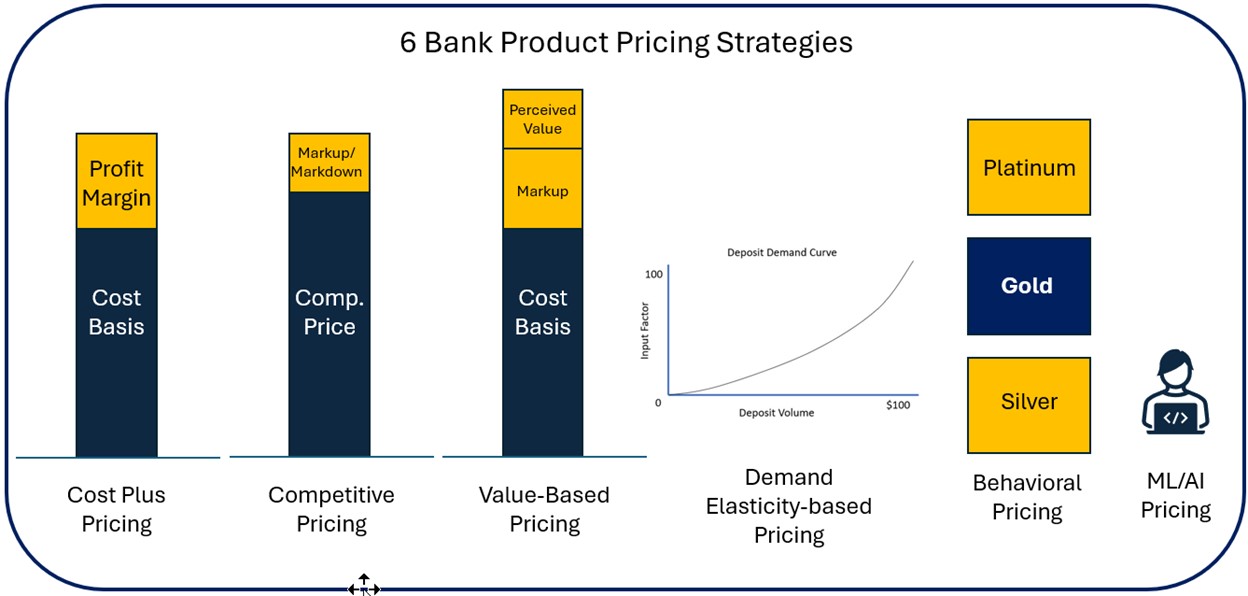Creating a Dynamic Pricing Strategy to Remain Ahead of the Competitors
Creating a Dynamic Pricing Strategy to Remain Ahead of the Competitors
Blog Article

Master Effective Pricing Strategies to Maximize Revenue
In the ever-evolving landscape of commerce, grasping efficient pricing approaches is necessary for services intending to maximize earnings. A nuanced understanding of rates psychology can considerably influence consumer actions and buying choices.
Understanding Rates Psychology
Recognizing pricing psychology is important for businesses aiming to optimize their prices techniques. This field checks out just how consumers view costs and how these assumptions affect their acquiring choices. Key concepts in prices psychology consist of the anchoring result, where the initial price offered acts as a reference point for consumers, and the principle of price level of sensitivity, which differs amongst various client sections.
In addition, businesses can leverage the idea of perceived worth, where the regarded benefits of a services or product can warrant a higher rate point. Premium prices can develop a mood of exclusivity, drawing in customers that link higher prices with exceptional high quality. On the various other hand, emotional pricing, such as setting a price at $9.99 instead of $10, can substantially impact consumer habits by making costs appear more attractive.
In addition, shortage and necessity can improve the perceived worth of items, triggering quicker buying choices. Understanding these emotional triggers makes it possible for organizations to create rates methods that not just drive sales yet likewise foster consumer commitment. Therefore, mastering pricing psychology is essential for effective rates method formula, resulting in improved profitability and market positioning.
Implementing Value-Based Rates

Next, section your customers based on their determination to pay and the worth they regard. By doing so, you can tailor offerings and rates techniques to straighten with different sectors.
Continuously keep an eye on market conditions and consumer feedback to improve your prices technique over time. By executing value-based pricing, services can improve productivity while fostering long-term client commitment.
Exploring Dynamic Prices Versions
In today's rapidly transforming market landscape, dynamic pricing designs have become an effective strategy for services looking for to enhance revenue and respond to changes in demand. These versions enable business to change their rates in real-time based upon numerous aspects such as consumer actions, market fads, and inventory levels. By leveraging information analytics and formulas, organizations can identify ideal prices factors that make best use of sales while continuing to be competitive.
Dynamic rates can take different kinds, including time-based prices, where costs vary based on time of day or season, and demand-based pricing, which adjusts prices according to existing customer need. This adaptability not only improves profitability yet additionally enhances consumer satisfaction by providing prices that show real-time market conditions.
Carrying out dynamic rates requires a durable technological infrastructure and a deep understanding of consumer sections. It is vital for services to keep an eye on market signals and customer responses continually, making sure that prices techniques straighten with wider service objectives. Moreover, clear communication regarding prices modifications can help alleviate client dissatisfaction and foster count on, ultimately leading to continual profitability in a competitive industry. Embracing vibrant prices can hence be a transformative technique in the mission for making best use of income.
Analyzing Competitor Rates
Keeping track of competitor pricing is important for businesses aiming to maintain a competitive edge in their particular markets. By evaluating rivals' pricing approaches, companies can recognize market patterns, recognize customer preferences, and readjust their pricing appropriately. This analysis involves event information on competitors' prices, promotional techniques, and item offerings to inform rates choices.
To properly examine this link rival rates, organizations ought to utilize numerous tools and strategies, such as cost monitoring software, marketing research reports, and customer responses. This data can disclose just how competitors position their product or services, enabling services to separate their offerings or embrace image source comparable approaches to remain appropriate.
Additionally, it is important to classify rivals into straight and indirect competitors. Straight rivals use comparable services or products, while indirect competitors might fulfill the exact same consumer demand with different solutions. Recognizing the subtleties between these groups will certainly allow businesses to tailor their rates strategies better.
Ultimately, recurring rival rates evaluation is vital for making enlightened prices choices. It permits businesses to stay active in reaction to market shifts, guaranteeing they can confiscate opportunities and reduce risks associated with prices approaches.
Assessing Prices Efficiency
Understanding just how competitor rates affects market characteristics leads to an all-natural emphasis on evaluating prices performance within one's very own company. This assessment is important for recognizing locations of stamina and possibilities for improvement, inevitably improving profitability.

Additionally, performing regular rates audits can disclose disparities in between expected and real performance. This entails comparing rates information across various segments and networks to comprehend variances and determine fads. Additionally, integrating customer feedback can supply understandings visit here into regarded worth versus actual rates, making sure placement with market expectations.
Finally, leveraging information analytics devices can facilitate deeper insights into pricing efficiency, allowing organizations to make data-driven adjustments (Pricing Strategy). By continually examining rates performance, organizations can adapt to market adjustments and maximize their methods, guaranteeing continual productivity in a competitive landscape
Conclusion
By leveraging prices psychology, businesses can enhance viewed worth and dressmaker rates to diverse consumer sections. The fostering of dynamic and value-based pricing versions assists in real-time modifications based on demand and customer desire to pay.
Understanding pricing psychology is important for companies aiming to enhance their pricing strategies. Recognizing these psychological triggers allows organizations to develop pricing techniques that not just drive sales but also foster customer commitment. Therefore, understanding pricing psychology is necessary for reliable rates strategy formulation, leading to enhanced profitability and market positioning.
By analyzing rivals' pricing methods, companies can recognize market patterns, recognize consumer preferences, and adjust their prices accordingly. By leveraging prices psychology, businesses can improve perceived value and tailor prices to varied customer sections.
Report this page